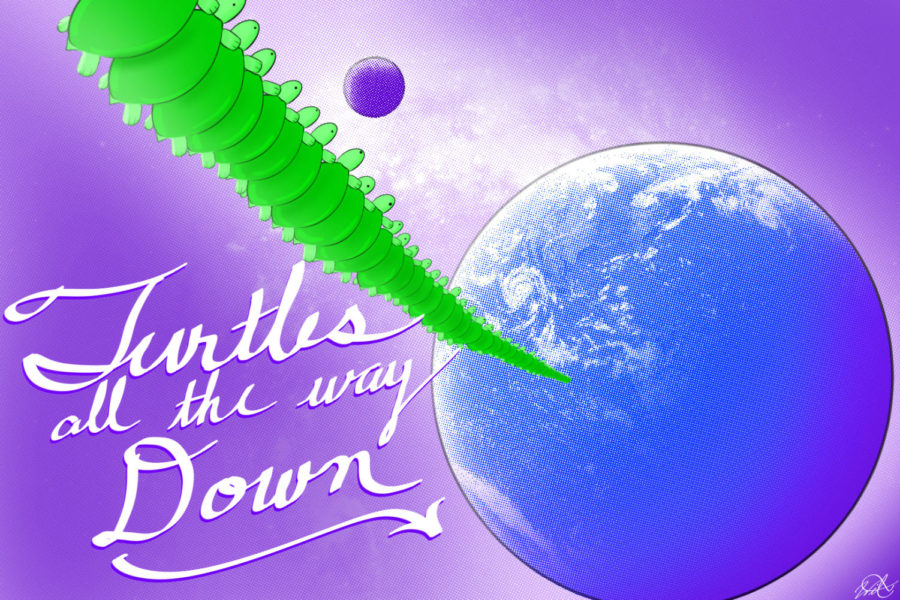Turtles All the Way Down Brings New Representation for the Mentally Ill
Will the newest John Green book live up to its predecessors hype?
John Green’s newest book, Turtles All the Way Down, brings representation to the mentally ill community. The book has been criticized for its fakeness, but it’s overall value is something to be considered.
January 24, 2018
Author John Green has finally done it. He has written a book that appeals to more than just the average angst-filled teenager.
Now, don’t get me wrong; I have read all of John Green’s books and moderately enjoyed them. I read Turtles All the Way Down, his newest YA book, expecting it to be a mediocrely written, love-filled story that would capture my focus for about an hour.
Boy, was I wrong! Don’t judge a book by its author’s past books, I guess.
Turtles All the Way Down follows the adventures of Aza Holmes and her best friend Daisy Ramirez as they struggle to figure out life, love, friendship, and mental health while juggling high school and the impending doom of college applications.
The novel starts as a mystery, as Holmes and Ramirez search for a billionaire who disappeared for the hefty reward. However, the story quickly loses its intensity and becomes sappy after the girls abandon their mission.
Holmes has a severe case of Obsessive Compulsive Disorder. Although she is fairly high-functioning, her mental illness takes over most of her life, and the readers get insight into her inner turmoil as she struggles to complete daily tasks, like eating.
Green claims to have based Holmes’ disorder on his own experience living with OCD, which he often discusses in length online.
As a high-functioning mentally ill person myself, I found Green’s depictions of Holmes’ struggle refreshing and exciting. He managed to do something no other author I have ever read has done before: accurately portray mental illness without glamorizing or villainizing it.
Holmes’ constant irrational worries and panic are beautifully and accurately written. The character struggles with the decision to take her medication, a feeling that is common among the mentally ill due to society’s stigmatization. Her hospitalization started conversations about psychiatric care, although Green’s portrayal was slightly unrealistic.
Ramirez serves as a flawed yet important example for those close to someone with mental illness. At her best, she seems to always say the right thing, gently acknowledging Holmes’ symptoms without judgment. Her few moments of error reassure readers that no one will be perfect, and her mistakes are always recognized, showing growth and allowing the reader to learn from her mistakes.
Green captures the frustration in a relationships where one person is mentally healthy and the other mentally ill exceptionally well. The characters struggle to understand the pain of one another, as is common, and Holmes expresses severe guilt over the hindrances her mental illness imposes in other people’s lives. She feels like a burden and struggles to explain her irrational thought patterns, which can be extremely annoying for both the person who doesn’t understand and the person who is trying to explain, making the relationship between Holmes and her mother even more meaningful.
Even if you are not mentally ill, the book is still relatable. Although Green is 40, he captures the confusion of the teenage years: not being a child anymore while not having yet reached adulthood. The seemingly unnecessary cost of college and debt are common themes within the book, and the pressure to get into college is something constantly on Ramirez and Holmes’ minds
However, if Holmes was not mentally ill, the book would have been a complete failure. Green clearly panders to his younger audience, forcing awkward and cringe-worthy nicknames like “Holmesly” on his characters and giving Ramirez a bad obsession with Star Wars.
The book was exciting at the beginning: a story about friends not spoiled by incessant romance and sappy love. But, to be frank, it all fell apart in the last chapter. The characters were enveloped by shallow romance, the plot disintegrated, and Green’s attempt to attach a universal truth about the sanctity of love was a complete failure.
For lower level readers like those in elementary and middle school, the book is a worthy read because its representation of the mental ill is superb, a huge win for the mentally ill community and the fight against stigma. However, I cannot say that I recommend Turtles All the Way Down, unless you are looking for a sappy, easy-read.



